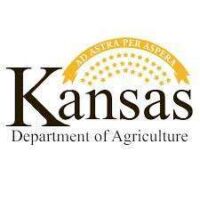Contact: Bill Meyer
September 8, 2020 (800) 392-3202
CROP PROGRESS AND CONDITION
WEEK ENDING SEPTEMBER 6, 2020
AGRICULTURAL SUMMARY: Extremely hot and dry weather persisted last week, pushing crop maturity and harvest progress, according to the Mountain Region Field Office of the National Agricultural Statistics Service, USDA. In northeastern counties, producers began corn silage harvest and harvest of millet. County reports continued to note failure of non-irrigated crops due to drought. Livestock producers continued to remove stock from native grass and provide supplemental feed. A county report noted producers were utilizing emergency CRP grazing in addition to aggressively culling their herds and weaning calves in response to drought. East central counties received spotty moisture early last week, but overall conditions remained very dry. Millet harvest advanced quickly and seeding of winter wheat was noted. Southwestern counties received minimal moisture last week and producers began corn silage harvest. Extreme drought conditions persisted. In the San Luis Valley, barley harvest, ahead of the average, was virtually complete. Potato harvest also picked up last week. Cooler weather was noted, but pastures and rangeland remained very dry. In southeastern counties, dry conditions allowed corn silage and alfalfa hay harvest to make good progress. Limited seeding of winter wheat also began. Statewide, stored feed supplies were rated 8 percent very short, 29 percent short, 60 percent adequate, and 3 percent surplus. Sheep death loss was 69 percent average and 31 percent light. Cattle death loss was 82 percent average and 18 percent light.
CROP AND LIVESTOCK PROGRESS
| Commodity | Current week | Previous week | Previous year | 5-year average |
| (percent) | (percent) | (percent) | (percent) | |
| Alfalfa hay
3rd cutting harvested …………………………………… |
64 |
54 |
58 |
65 |
| 4th cutting harvested …………………………………… | 11 | 3 | 16 | 9 |
| Barley
Harvested …………………………………………………. |
95 |
84 |
90 |
86 |
| Corn
Doughed …………………………………………………… |
95 |
86 |
85 |
90 |
| Dented ……………………………………………………… | 62 | 39 | 38 | 55 |
| Mature ……………………………………………………… | 10 | 4 | 2 | 5 |
| Harvested for silage …………………………………… | 27 | 14 | 14 | 24 |
| Dry edible beans
Cut ………………………………………………………….. |
16 |
7 |
5 |
21 |
| Harvested …………………………………………………. | 2 | — | 2 | NA |
| Onions
Harvested …………………………………………………. |
15 |
6 |
5 |
28 |
| Potatoes inside San Luis Valley
Harvested …………………………………………………. |
9 |
6 |
15 |
9 |
| Potatoes outside San Luis Valley
Harvested …………………………………………………. |
30 |
13 |
24 |
35 |
| Proso Millet
Harvested …………………………………………………. |
32 |
3 |
17 |
NA |
| Sorghum
Headed …………………………………………………….. |
92 |
91 |
95 |
95 |
| Turning color ……………………………………………. | 56 | 39 | 28 | 52 |
| Mature ……………………………………………………… | 15 | 8 | 2 | 4 |
| Winter wheat
Planted …………………………………………………….. |
17 |
— |
4 |
7 |
NA – not available
(–) – zero
DAYS SUITABLE FOR FIELDWORK AND SOIL MOISTURE CONDITION
| Current week | Previous week | Previous year | 5-year average | |
| Days suitable for fieldwork ……………………………… | 6.9 | 6.6 | 6.6 | 6.6 |
|
Topsoil moisture |
(percent) |
(percent) |
(percent) |
(percent) |
| Very short ………………………………………………… | 44 | 46 | 5 | 6 |
| Short ……………………………………………………….. | 36 | 36 | 27 | 27 |
| Adequate …………………………………………………. | 20 | 18 | 67 | 66 |
| Surplus…………………………………………………….. | — | — | 1 | 1 |
| Subsoil moisture
Very short ………………………………………………… |
41 |
43 |
5 |
7 |
| Short ……………………………………………………….. | 40 | 39 | 22 | 25 |
| Adequate …………………………………………………. | 19 | 18 | 70 | 66 |
| Surplus…………………………………………………….. | — | — | 3 | 2 |
NA – not available
(–) – zero
NASS provides accurate, timely, and useful statistics in service to U.S. agriculture. We invite you to provide occasional feedback on our products and services. Sign up at http:/usda.mannlib.cornell.edu/subscriptions and look for “NASS Data User Community.” USDA is an equal opportunity provider, employer and lender. To file a complaint of discrimination, write: USDA, Director, Office of Civil Rights, 1400 Independence Ave., S.W., Washington, D.C. 20250-9410 or call (800) 795-3272 (voice), or (202) 720-6382 (TDD).
CROP, LIVESTOCK, PASTURE AND RANGE CONDITION
| Commodity | Current week | Previous week | Previous year | 5-year average |
| (percent) | (percent) | (percent) | (percent) | |
| Alfalfa hay
Very poor …………………………………………………. |
7 |
10 |
2 |
3 |
| Poor …………………………………………………………. | 10 | 12 | 3 | 7 |
| Fair ………………………………………………………….. | 24 | 28 | 8 | 20 |
| Good ……………………………………………………….. | 51 | 43 | 77 | 59 |
| Excellent ………………………………………………….. | 8 | 7 | 10 | 11 |
| Corn
Very poor …………………………………………………. |
21 |
26 |
— |
1 |
| Poor …………………………………………………………. | 18 | 18 | 2 | 5 |
| Fair ………………………………………………………….. | 25 | 25 | 18 | 22 |
| Good ……………………………………………………….. | 32 | 27 | 65 | 60 |
| Excellent ………………………………………………….. | 4 | 4 | 15 | 12 |
| Dry edible beans
Very poor …………………………………………………. |
3 |
3 |
— |
2 |
| Poor …………………………………………………………. | 25 | 23 | 6 | 7 |
| Fair ………………………………………………………….. | 42 | 41 | 38 | 25 |
| Good ……………………………………………………….. | 29 | 32 | 51 | 59 |
| Excellent ………………………………………………….. | 1 | 1 | 5 | 7 |
| Onions
Very poor …………………………………………………. |
3 |
3 |
— |
2 |
| Poor …………………………………………………………. | 6 | 6 | — | 5 |
| Fair ………………………………………………………….. | 24 | 24 | 6 | 11 |
| Good ……………………………………………………….. | 62 | 62 | 92 | 72 |
| Excellent ………………………………………………….. | 5 | 5 | 2 | 10 |
| Pasture and range
Very poor …………………………………………………. |
25 |
26 |
2 |
6 |
| Poor …………………………………………………………. | 32 | 31 | 4 | 12 |
| Fair ………………………………………………………….. | 32 | 36 | 22 | 25 |
| Good ……………………………………………………….. | 11 | 6 | 64 | 49 |
| Excellent ………………………………………………….. | — | 1 | 8 | 8 |
| Potatoes inside San Luis Valley
Very poor …………………………………………………. |
5 |
2 |
— |
— |
| Poor …………………………………………………………. | 15 | 6 | 10 | 6 |
| Fair ………………………………………………………….. | 24 | 20 | 30 | 18 |
| Good ……………………………………………………….. | 41 | 50 | 40 | 54 |
| Excellent ………………………………………………….. | 15 | 22 | 20 | 22 |
| Potatoes outside San Luis Valley
Very poor …………………………………………………. |
— |
— |
— |
— |
| Poor …………………………………………………………. | 6 | 5 | 1 | 1 |
| Fair ………………………………………………………….. | 20 | 20 | 18 | 9 |
| Good ……………………………………………………….. | 59 | 60 | 72 | 79 |
| Excellent ………………………………………………….. | 15 | 15 | 9 | 11 |
| Sorghum
Very poor …………………………………………………. |
19 |
20 |
1 |
1 |
| Poor …………………………………………………………. | 23 | 23 | 2 | 4 |
| Fair ………………………………………………………….. | 43 | 40 | 23 | 23 |
| Good ……………………………………………………….. | 13 | 15 | 64 | 65 |
| Excellent ………………………………………………….. | 2 | 2 | 10 | 7 |
| Sugarbeets
Very poor …………………………………………………. |
3 |
9 |
— |
— |
| Poor …………………………………………………………. | 8 | 11 | — | 2 |
| Fair ………………………………………………………….. | 25 | 24 | 12 | 14 |
| Good ……………………………………………………….. | 55 | 48 | 75 | 68 |
| Excellent ………………………………………………….. | 9 | 8 | 13 | 16 |
| Sunflowers
Very poor …………………………………………………. |
8 |
7 |
— |
— |
| Poor …………………………………………………………. | 33 | 33 | — | 3 |
| Fair ………………………………………………………….. | 42 | 43 | 17 | 23 |
| Good ……………………………………………………….. | 16 | 16 | 69 | 65 |
| Excellent …………………………………………………..
|
1
|
1
|
14
|
9
|
| Livestock
Very poor …………………………………………………. |
2 |
4 |
— |
— |
| Poor …………………………………………………………. | 5 | 8 | 2 | 1 |
| Fair ………………………………………………………….. | 30 | 32 | 8 | 11 |
| Good ……………………………………………………….. | 54 | 47 | 78 | 78 |
| Excellent ………………………………………………….. | 9 | 9 | 12 | 10 |
NA – not available
(–) – zero



